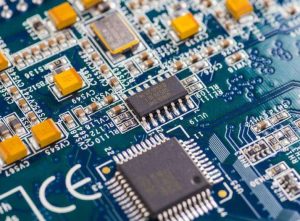Let’s break down the world of active components – the essential players that make electronic circuits tick. These aren’t your run-of-the-mill passive components that just sit there transmitting signals. Active components are the real deal, actively manipulating electrical signals to perform a variety of critical functions.
More Than Just Loudspeakers:
You might think of active components as simply amplifiers, cranking up the volume of electrical signals. And yes, amplification is a key strength. Imagine a weak sensor signal that needs to be strong enough for processing. Active components come to the rescue, boosting the signal’s power (voltage or current) for further use. This is crucial for tasks like:
- Amplifying Radio Signals: Those faint radio waves traveling through the air? Active components amplify them, allowing your radio to produce clear and audible sound.
- Processing Sensor Data: Many electronic devices rely on weak signals from sensors like temperature or pressure gauges. Active components amplify these signals to a level usable by other parts of the circuit.
Beyond Volume Control: Signal Manipulation Magic
Active components go way beyond just boosting the volume. They offer a toolbox of functionalities thanks to their ability to control the flow of electrical signals within a circuit. Think of them as conductors directing the electrical orchestra:
- Switching Power On and Off: Just like a light switch, active components can act as electronic switches, turning signals on or off entirely. This is essential for controlling power flow in circuits.
- Filtering Out the Noise: Imagine trying to listen to music in a crowded room. Active components act like filters, allowing only specific frequencies of an electrical signal to pass through, while blocking unwanted noise. This is vital for tasks like separating the audio signal from background noise in headphones.
- Signal Conditioning: Shaping the Message Active components can modify the characteristics of a signal beyond simple amplification or filtering. They can shape the signal’s waveform, adjust its timing, or even convert it from analog to digital form. This is crucial for preparing sensor data for processing by digital circuits.
Fueling the Action
Unlike their passive counterparts, active components require external power to operate, typically coming from a dedicated DC power supply circuit within the device. However, it’s important to note that they don’t necessarily “consume” all the energy they utilize. In amplification, for example, they use a small amount of control power to significantly increase the strength of an existing signal.
The Essential Players:
Several types of active components form the backbone of modern electronics:
- Transistors: The workhorses of active circuitry, transistors can amplify, switch, and control signals. They are the foundational building blocks of countless electronic devices.
- Integrated Circuits (ICs): Often called “chips,” these miniature marvels contain billions of interconnected transistors and other components, performing complex electronic functions in a single package. They are the brains behind most modern devices.

Active Components
The Unsung Heroes
Active components are the often-unseen heroes of the electronics world. By amplifying, controlling, and shaping signals, they enable a vast array of functions that power our modern world. From the faintest sensor signal to the booming sound of your speakers, active components play an essential role in making electronics function and bringing technology to life.
